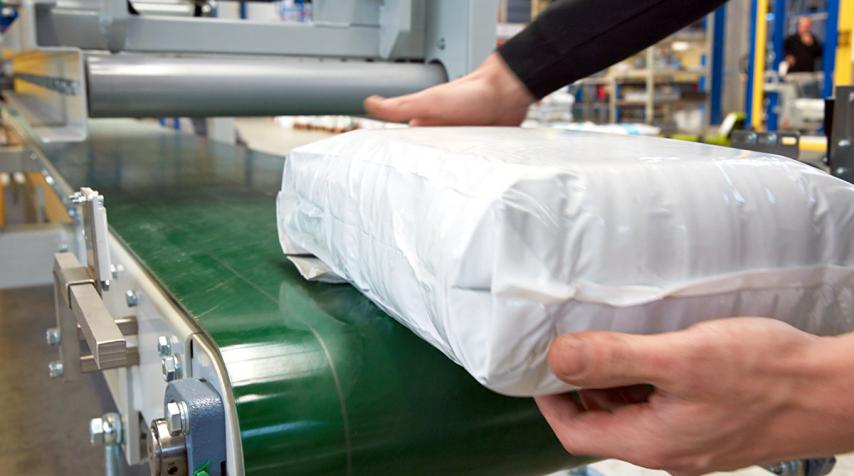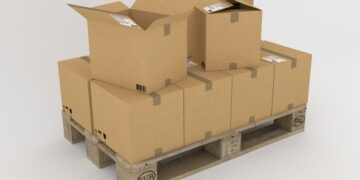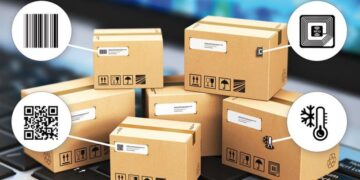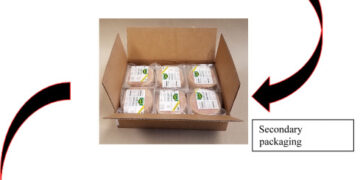China is the world’s factory and an ideal environment for manufacturing. This is because China has a huge supply of low-cost labour and abundant natural resources, which help manufacturers save money. Furthermore, China has high-tech manufacturing facilities and a large number of providers of manufacturing services, making it easy for manufacturers to set up new factories.
In addition to all this, China has strict laws that define the types of packaging equipment that are allowed in its marketplaces. These regulations include rules about container sizes, shape, labelling requirements, environmental regulations, etc. Given all this information, here is a look at some of the ways you can source packaging equipment in China and how that country’s policies affect your company’s sourcing plan.

How to source packaging equipment in China
Many companies planning to set up a new packaging line in China begin with the idea that they will import the equipment from the initial manufacturing location. While this is a sensible approach for some products, it is not a good approach for all types of packaging equipment. The first reason for this is that the Chinese government has strict regulations about the types of packaging equipment that are allowed to be imported.
Therefore, the type of equipment that you want to manufacture in China will depend on the type of equipment you want to import. Apart from this, you will also need to pay attention to other factors that are unique to the Chinese market. One of these factors is the way you will source your packaging equipment in China. There are three main ways to source packaging equipment in China. They are:
- Import the equipment from your manufacturing location, the country of manufacture, or a third-party supplier. This option is the most expensive way to source packaging equipment in China since you will have to pay for travel, logistics and import duties.
- Build a manufacturing facility in China and source your packaging equipment from that site. This is the most common way to source packaging equipment in China and is often done by OEM suppliers.
- Import the equipment from global stock. This is the cheapest way to source packaging equipment in China, but you will have to wait for delivery.
Differences Between OEM and ODM Packaging Equipment Suppliers
Manufacturing equipment in China is not the same as importing equipment from China. When you source packaging equipment from China, you will most likely choose between OEM and ODM suppliers. OEM is short for “Original Equipment Manufacturer.” OEM suppliers are the companies that manufacture packaging equipment in China, while ODMs are the companies that market the equipment and take care of the import duties, logistics and other import-related issues.
This article will look at these two business models and how they work in practice. There are many advantages to sourcing packaging equipment from OEM suppliers, especially for companies that want to source equipment from one or two locations. OEM suppliers allow you to buy equipment directly from the manufacturer and make sure that the equipment is authentic.
This option is ideal for companies that want to be certain that the equipment is free from third-party issues, such as maintenance and repair problems. Another reason why OEM suppliers are a better choice is cost. Many companies that source packaging equipment from China look for the lowest price and do not care about the quality of the equipment. OEM suppliers, on the other hand, are more willing to negotiate prices with their customers. This means that you are more likely to get the best deal by sourcing your equipment from an OEM supplier.

The Import Process for Packaging Equipment in China
The import process for packaging equipment in China can be long and complicated. The product has to pass through multiple government agencies, and each one of these agencies has its procedure and requirements for import.
In addition to this, some rules have to be followed by the importer. If you do not follow these rules, you could be fined or have your import license revoked. Here are some of the steps you will have to go through during the import process.
- Determining the Right Type of Import Process – The first step is to determine the correct type of import process for your packaging equipment. There are two main categories: manufacturing import, which involves the import of machinery used for manufacturing, and non-manufacturing import, which involves the import of machinery for ancillary industries.
- Import Licensing – After determining the correct import process, you will then need to get a license from the Chinese government. This will usually take about two weeks but can take longer if you are rejected by one of the agencies.
- Import Inspection – After the import license is issued, you will then have to undergo inspection by one of the authorities. You will have to provide documentation and samples, which will be inspected to make sure that they are of good quality.
- Customs Clearance – After the inspection and inspection is complete, your equipment will then clear customs. This can take several days, depending on the amount of your order.
Wrapping Film Equipment Suppliers in China
If you want to make packaging for food and beverages, you will need wrapping equipment. In China, you can source this type of equipment from suppliers that make a type of film called stretch film. Stretch film is a film that is typically made of polyethene and is used to wrap packages, such as cans, bottles or bags.
You can buy this type of equipment from stretch film equipment suppliers in China, which are located in the coastal areas of the country. The production of stretch film in China is mainly done by two types of facilities: the extrusion type and the calendering type.
The extrusion type generally uses high-pressure rollers to create a continuous film. This is the type that is used by the majority of stretch film manufacturers in China. The calendering type uses heated air to produce the film.

Corrugated Box-Making Equipment Suppliers in China
If you are looking to make corrugated boxes, you will need to source this type of equipment from manufacturers in China. These suppliers are mainly found in the coastal areas, and make boxes from corrugated paper. The manufacturers use a wide variety of equipment to make these boxes, such as a corrugator, a corrugator, a corrugator, a corrugator and a corrugator.
As corrugated paper mills are the main suppliers of boxes in China, you should make sure that the company is located in the coastal areas of the country. In addition to these, you will also have to make sure that the company is approved by the Chinese government.
Conveyor Belt, Pallet and Bin Bottom Making Equipment Suppliers in China
If you are looking to source conveyor belts, pallets and bin bottom-making equipment, you should make sure that they are made in China. You can do this by visiting a Chinese supplier or by using a supplier directory like www.agiletrade.com. If you are looking for the best Chinese suppliers, the conveyor belt, pallet and bin bottom-making equipment should be the first thing that comes to mind.
There are many suppliers of these products in China, and you can choose from among them based on the quality of their products, the price and the speed at which the products are delivered. When sourcing conveyor belts, pallets and bin bottom-making equipment from China, you will also have to make sure that the company is registered with the government.
Batching and Inspection Equipment Suppliers in China
If you are looking to source packaging equipment for batching and inspection purposes, you will have to choose from among the various manufacturers of this type of equipment in China. Many companies produce these types of equipment in China, and you can make your selection based on the price, the quality of the equipment and the delivery speed.
When sourcing equipment for batching and inspection, you will also have to make sure that the equipment that you are sourcing is registered with the Chinese government. You can do this by visiting the Henan E&M Trade Inspection Bureau website.
















